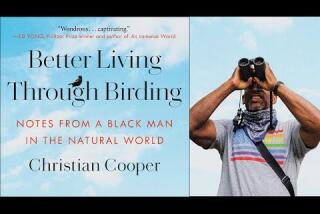‘The Terrible Threes,’ by Ishmael Reed
Dissent has had a rough time these last 10 years. Exhausted by the ideological civil war of the ‘60s and early ‘70s, steam-rollered by conservative orthodoxy, American writers have all but abandoned the field of social criticism and satire, choosing instead the smaller controversies of the historical novel (Vidal); novels about sex, sexual politics and the self (Roth, Updike, Bellow); even the detective novel (Mailer). A few writers still man the battlements of satire. Of these, Ishmael Reed is the most outraged and ferocious.
First, in “The Terrible Twos,” which chronicled a fictitious conspiracy between big business, the White House and an impostor, Saint Nicholas, to take over the Christmas industry, and now in “The Terrible Threes,” Reed hypothesizes an American government of the 1990s, waging war against the Third World and “surps”--surplus people: the homeless, the poor, women, blacks and Jews. Reed’s futuristic America is led by President Jesse Hatch, a neo-Nazi who denounces Ronald Reagan as a left-winger who presided over the biggest sell-out to the Soviets since Roosevelt at Yalta. The White House spiritual adviser, the evil Reverend Jones, encourages the Marines to round up the population and send them all to Sunday School. He urges passage of the Conversion Bill to “drive infidels out of the country.” Americans will have to convert to Christianity or go into exile. The Republic is saved when Nola Payne, first woman chief justice of the Supreme Court, suffers a nighttime visitation from the ghost of the Supreme Court justice who decided against Dred Scott in 1837, now “condemned to wander around the American hell . . . (his) name spoken in disgust.” The next morning, she rules against the Conversion Bill and topples the government of Jesse Hatch. Meanwhile, Reverend Jones encounters Satan himself (who wears a beeper) who assures the Reverend of his place in hell. Along the way, Reed targets: feminists, writers of minimalist fiction, neoconservatives, a Social Darwinist newspaper columnist who affects a bow-tie and quotes heavily from the classics in order to bolster his shameless kow-towing to the ruling elite; daytime talk-show hosts and assorted ideologues who try to keep blacks and Jews (all “surps” in the government’s eyes) from common cause.
Fans of Reed’s earlier work will recognize the frenzied inventiveness of this work. Reed is our best literary example of what Claude Levi-Strauss described in “The Savage Mind” as “the bricoleur ,” drawing material and inspiration from anything and everything around him: popular culture, Yoruba cosmology, TV, the Bible and of course, the daily headlines. But fans may also be disappointed. In the depth of his rage, Reed perhaps spreads himself too thin. The early chapters jumble together in a melee of situations and characters. We track one character for three pages, then another for five, then another. Then another. The strands of Reed’s narrative web together in the end, but the early going is disjointed and confusing. (“The Threes” will be almost impossible to understand without first having read “The Twos,” even though Reed provides a precis of the earlier book.) And of course there will be those who will take political issue with Reed’s Brave New World, and who will dismiss it. But there will be others who won’t.
Reed’s vision of the future (and our present and past) is original and subversive. Subversion is out of style these days, but unfashionable or not, Reed is an always interesting writer and this book deserves to be read.
More to Read
Sign up for our Book Club newsletter
Get the latest news, events and more from the Los Angeles Times Book Club, and help us get L.A. reading and talking.
You may occasionally receive promotional content from the Los Angeles Times.








